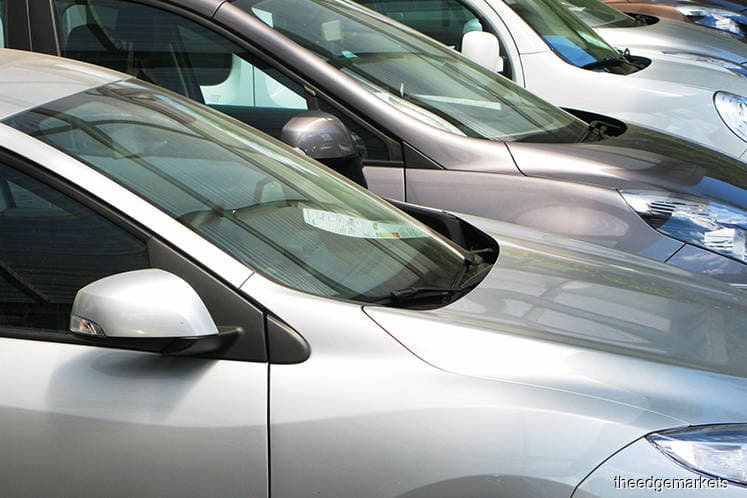
KUALA LUMPUR (Nov 20): Automotive sales for the final two months of 2017 will recover from a variety of factors, primarily from the launch of the new Perodua Myvi, according to analysts covering the sector.
TA Research in its note today said that a slight recovery in total industry volume (TIV) is foreseen as attractive packages and productive offerings boost consumer spending in November and December.
Furthermore, the introduction of the new Mazda CX-5 (Bermaz Auto Bhd or BAuto) and Myvi (Perusahaan Otomobil Kedua Sdn Bhd or Perodua) in October and last week respectively are expected to boost demand.
The Myvi, in particular, recorded 5,000 bookings ahead of its official launch on Nov 16. Sales rose further to hit 6,000 units the following day.
“We maintain our ‘underweight’ stance on the industry and our 2017 TIV forecast at 586,500 units (up 1.1% year-on-year). Our forecast reflects a slight recovery in TIV, as we anticipate consumers will yield to attractive packages and product offerings. Furthermore, new models, such as the all-new Mazda CX-5, and the third generation Myvi, will excite the market,” TA Research said.
Still, sustained stringer hire purchase (HP) loan requirements continue to be a dampener of TIV growth, going forward, it said.
Similarly, Mohd Shanaz Noor Azam of CIMB Research said the research firm expects November-December sales to be higher, driven by seasonally stronger demand, fuelled by wider discounts, as dealers attempt to reduce their inventories ahead of the new year.
“Moreover, we believe the recently-launched third-generation Perodua Myvi will help to boost TIV sales, as we gather that it has received bookings for 6,000 units in the past two weeks,” Shanaz said.
Perodua now commands 36% of the overall vehicle market.
“TIV from November onwards should improve quite significantly, given the launch of the new Myvi, which was the best-selling model in the market for a decade before the Axia was launched,” Hafriz Hezry of MIDF Research said.
TIV for October was 14.8% higher month-on-month at 47,041 units but marginally lower year-on-year by 1.8%. This brought total sales for the cumulative 10 months of the year to 472,724 units (up 1.4% y-o-y).
In terms of forex exposure, Hafriz cited BAuto and Perodua as beneficiaries of the stronger ringgit, while Tan Chong being more sensitive to forex changes. UMW Toyota Motor Sdn Bhd, which is a unit of UMW Holdings Bhd, meanwhile, was said to have the “largest exposure” to the dollar, as all its kits and completed units are transacted in the dollar.
“UMW Toyota has the largest exposure to the USD, given that all its imported CKD (completely knocked down) kits and CBUs (completely built up) are transacted in the dollar. Given low localisation rates (of between 20%-60%) relative to the national makes (of 80%-95%), we estimate around half of total component costs are imported,” he said.
“Tan Chong meanwhile, is estimated to have circa 80% (of total imported cost) exposure to USD imports, with the rest in Japanese yen. Every 1% change in the USD impacts our FY18 forecasts by 4.7% for UMW and 16% for Tan Chong. As Tan Chong is loss making (relative to the steady state earnings of RM200 million-RM300 million per annum prior to the downcycle), it is more sensitive to forex changes now,” he added.
As for BAuto, Hafriz explained the company’s imports are fully exposed to the yen via CBU imports, whereas CKDs such as the CX5 and Mazda 3 models are purchased at a fixed ringgit price from 30%-owned Mazda Malaysia Sdn Bhd (MMSB), the importer and assembler of Mazda CKDs.
“To make this possible, MMSB absorbs the yen volatilities from CKD imports; which means that MMSB also benefits from the current ringgit strength. We estimate that every 1% strengthening of the ringgit against the yen, impacts BAuto’s FY18 forecast earnings by 3%,” Hafriz said.
“Perodua is another beneficiary, given its exposure to the yen (and partly the dollar). Every 1% change in the yen impacts our FY18 forecast by 1%. UMW is the largest local shareholder of Perodua with a 38% stake, followed by MBM (MBM Resources Bhd) with an effective 22.6% stake.”